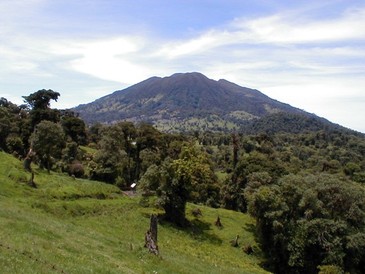|
On the 12th Januray a new vent opened at the Turrialba Volcano in Costa Rica.  Turrialba Volcano, taken by Eliecer Duarte (OVSICORI-UNA) (GVP) Turrialba Volcano, stands at over 3300m high and is characterised by Basaltic to Dacitic type lavas. The initial fumarolic vent formation was caused by overpressured rock which then collapsed to allow gases and what people refer to as non-juvenile or material not from fresh magma to escape. A fumarole is a vent which emits steam, gas or potentially other volcanic material at high temperatures, generally ranging from 100 to 1000 degrees celsius. The openeing of this vent was caused by the breakdown of the rock material, typically, but not exclusively, volcanoes in humid regions such as Costa Rica are more susceptible to collapse. This is caused by acidic water eroding and weakening rock, which, when the correct pressure is applied is liable to collapse. This process can be sped up by a constant degassing volcano such as Turrialba currently. I highly recommend watching this video of the area after the 12th January incident, there is also a very good summary of the event by the Costa Rican Volcanology and Seimsmology Observatory available here. The video below shows activity recorded on the 18th January as an ash and steam emission began on the volcano. With another Costa Rican volcano, Irazú, a new eruption was preceeded by the opening of several new fumarolic vents, however OVSICORI-UNA have stated they do not currently believe a new eruption is expected soon, however they do state that Turrialba is an active volcano and the situation could change quickly due to its constant degassing state.
25/6/2012 11:53:39 pm
The video which you have shared with us about Turrialba is amazing. Please share some other videos like this. Comments are closed.
|
Archives
July 2023
|

 RSS Feed
RSS Feed